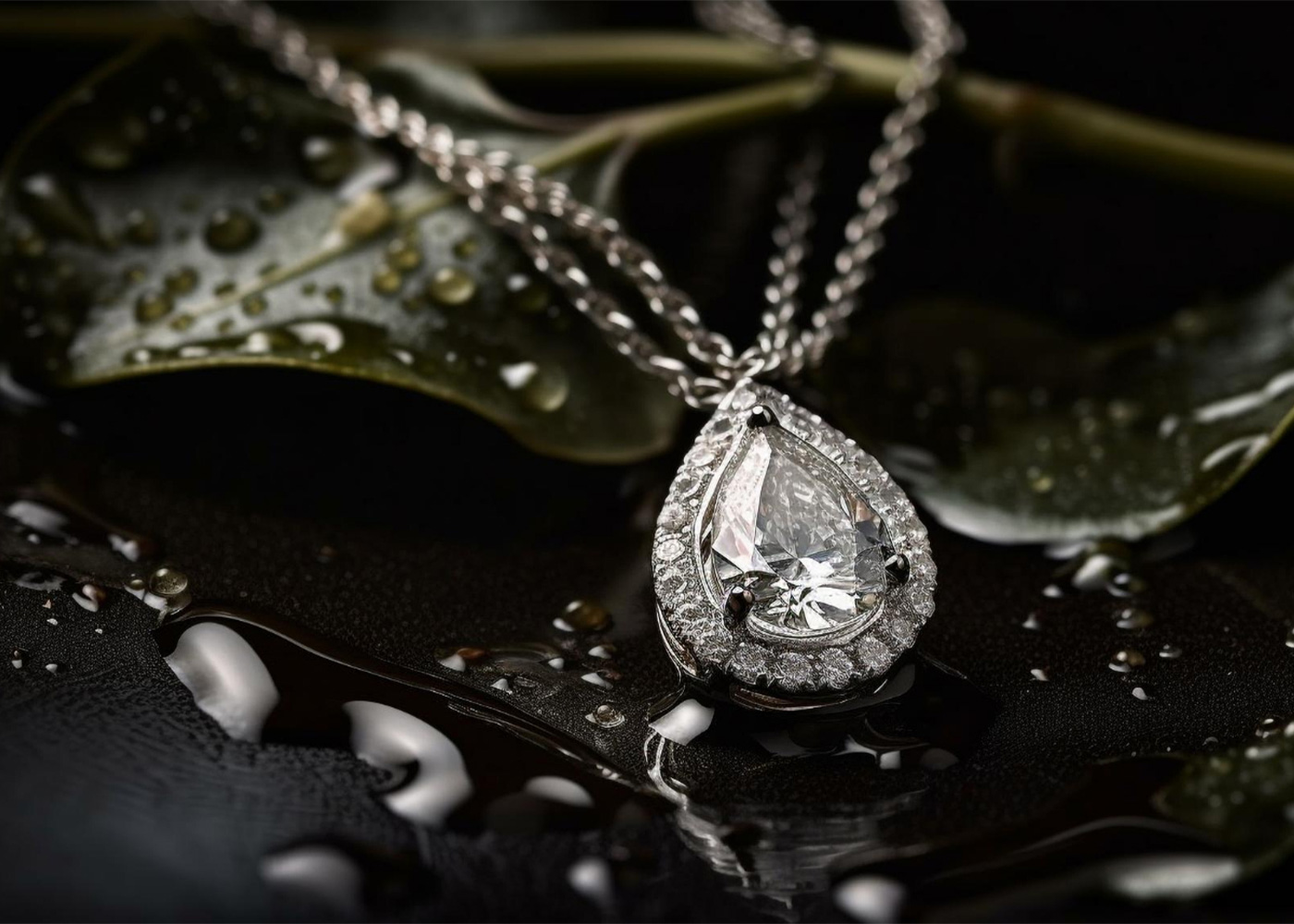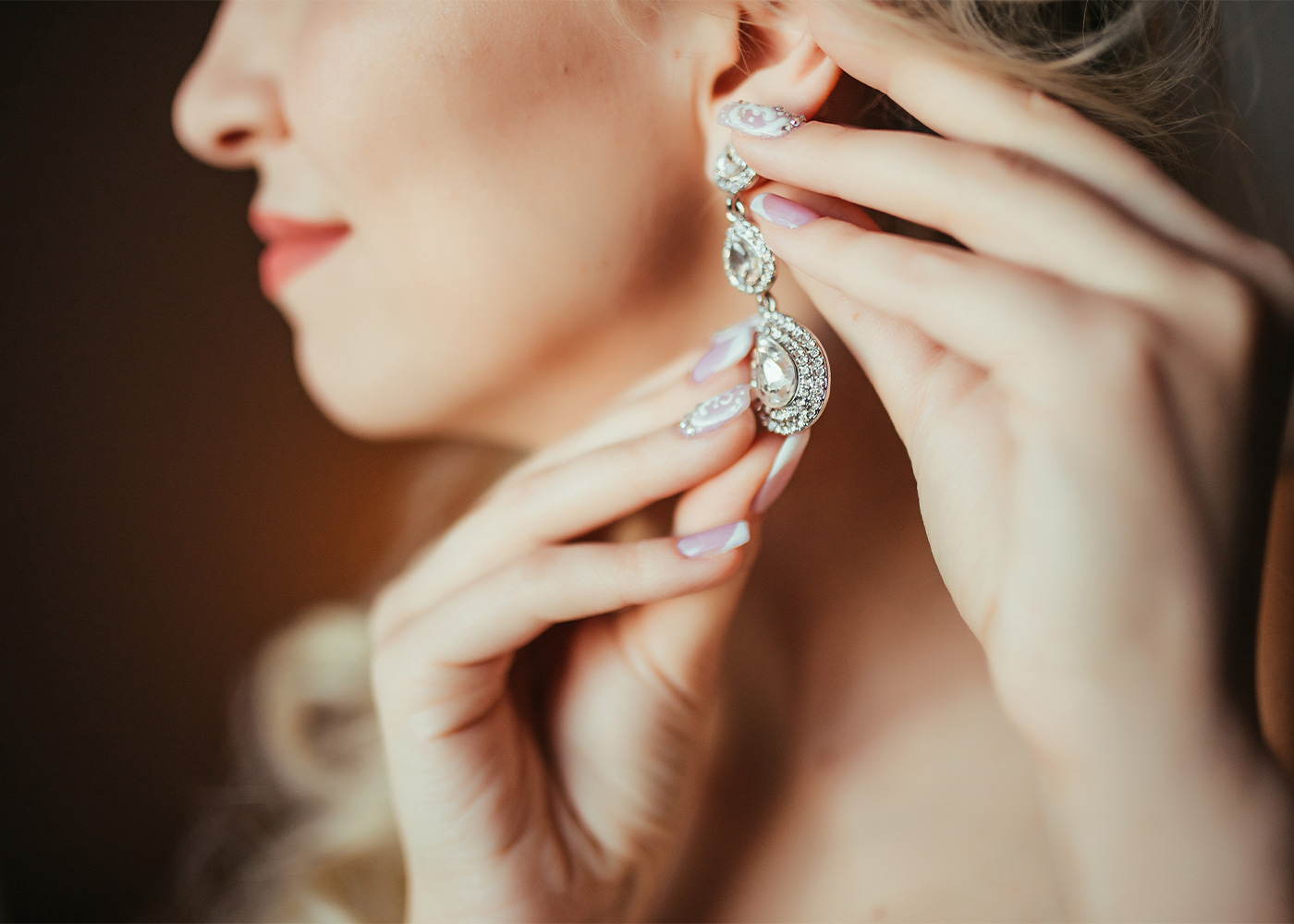The Technique and Artistry Behind Gold Jewelry Photography

For centuries, gold jewelry has held a steadfast allure, embodying luxury, elegance, and timeless appeal. As the realm of jewelry-making continues to evolve, so does the need for capturing the intricate details, radiance, and charm of gold jewelry through the lens. This essay delves into the technique and artistry of gold jewelry photography, delving into the complexities, strategies, and creative processes that encompass the pursuit of capturing the brilliance of these cherished adornments.
If you are looking for exciting ideas for creating advertising photos, be sure to visit the portfolio page of Studio NextShot.
Significance of Gold Jewelry Photography:
The realm of gold jewelry photography serves a multifaceted purpose, ranging from showcasing the expertise of jewelry designers to enthralling potential patrons. In the contemporary digital landscape, high-quality visuals are of paramount importance, playing a pivotal role in establishing an online presence, luring customers, and establishing a brand’s distinctive identity. Well-executed photography not only accentuates the aesthetic allure of gold jewelry but also conveys its intrinsic value and exclusivity.
Challenges Inherent in Gold Jewelry Photography:
Photographing gold jewelry presents its own set of intricate challenges, stemming from its reflective surface, intricate designs, and sensitivity to light. The reflective nature of gold often leads to issues of overexposure and unintended reflections, which can obscure finer details and diminish the essence of the piece. Furthermore, capturing the ornate patterns and textures of jewelry necessitates meticulous attention to focus and depth of field.
The Crucial Role of Lighting:
Lighting emerges as a pivotal factor in gold jewelry photography, exerting a pronounced influence on the overall ambiance, color fidelity, and clarity of the visual representation. The use of natural light, thoughtfully diffused through a lightbox or softbox, remains a favored approach for its ability to deliver uniform illumination while minimizing stark reflections. The golden hour, encompassing both sunrise and sunset, infuses jewelry pieces with a warm, almost otherworldly radiance, heightening their intrinsic allure.

Essential Equipment and Setup:
The selection of suitable equipment and the meticulous arrangement of a controlled environment are pivotal stages in gold jewelry photography. A camera boasting high-resolution capabilities and a knack for macro photography is indispensable for capturing the finer intricacies of jewelry. A stable tripod serves to eliminate any unwelcome camera movement, thereby ensuring clarity in the final images. The incorporation of a light tent or lightbox facilitates diffused lighting, minimizing glares and reflections.
Crafting Composition and Aesthetic:
The art of gold jewelry photography hinges on the creation of an evocative composition. Thoughtful consideration of angles, backgrounds, and props significantly contributes to the visual narrative. A neutral backdrop—white or black—is often employed, enabling the jewelry piece to command undivided attention. The selective introduction of props, such as fabrics or complementary items, can lend contextual depth and visual intrigue.
The Role of Macro Photography and Depth of Field:
Macro photography emerges as a powerful tool for capturing intricate subjects on a grand scale. The use of a shallow depth of field achieves a pleasing separation between the jewelry piece and its backdrop, directing the viewer’s focus toward its delicate features. Such an approach effectively alleviates distractions arising from imperfections or reflections.
The Art of Post-Processing and Refinement:
Post-processing serves as the final transformative stage in perfecting gold jewelry images. Adjustments pertaining to exposure, contrast, color equilibrium, and sharpness contribute to the enhancement of brilliance and fine detailing. Diligent retouching endeavors to eliminate imperfections, dust particles, and minor reflections, ensuring the jewelry piece is showcased at its optimal without distorting its authentic characteristics.
Exploring Creative Vistas:
Gold jewelry photography fosters an environment ripe for artistic exploration. The manipulation of lighting angles, strategic inclusion of shadows, and deliberate use of reflections can yield visually arresting and imaginative outcomes. The incorporation of motion, such as capturing necklaces in a whirl or beads in descent, imbues the visuals with dynamism and intrigue.
Narrative Thread and Brand Identity:
Photography, as a mode of visual storytelling, offers a conduit for communicating brand identity and narrative associated with gold jewelry. The visual imagery ought to harmonize with a brand’s ethos, visual aesthetics, and target demographic. Consistency in style across the photographic portfolio plays an instrumental role in shaping a recognizable brand identity and cultivating trust among consumers.

Avoiding Common Jewelry Photography Mistakes
Photographing jewelry presents a unique set of challenges due to its reflective surfaces, intricate detailing, and small dimensions. To achieve successful results, it’s essential to be aware of prevalent errors and pitfalls. Here are some typical blunders to avoid when engaging in jewelry photography:
Inadequate Lighting:
The utilization of harsh or uneven lighting can lead to unwanted reflections, glare, and the loss of fine details. Avoid direct, intense light sources that create undesired reflections on the jewelry’s surface. Instead, opt for controlled and diffused lighting arrangements to attain uniform illumination.
Overexposure:
Overexposing the jewelry can result in the loss of texture and details, particularly in highly reflective areas. Adjust your camera settings and lighting conditions to ensure that highlights are adequately exposed without blowing out significant features.
Underexposure:
Conversely, underexposing the jewelry may yield dark, muddled images with poor clarity. Employ appropriate lighting and adjust your camera settings to guarantee that all aspects of the jewelry are well-illuminated and discernible.

Uneven Lighting:
Discrepancies in lighting can lead to inconsistent outcomes across different sections of the jewelry piece. Verify that the lighting is evenly spread across the entire subject, highlighting all angles and intricacies uniformly.
Incorrect White Balance:
Neglecting to set the correct white balance can result in unnatural or off-color representations of the jewelry. Select a white balance setting suitable for the lighting conditions to ensure precise color rendering.
Use of Subpar Equipment:
Utilizing a subpar camera, lens, or tripod can yield blurry, low-resolution images that fail to capture the jewelry’s intricate attributes. Invest in high-quality equipment, especially macro lenses, and stable tripods, to capture sharp, high-resolution images.
Lack of Precision in Focusing:
Successful jewelry photography demands meticulous focus to capture intricate details accurately. Employ manual focus or selective autofocus points to ensure that the most critical components of the jewelry are sharply in focus.
Disregarding Composition and Background:
Neglecting the background and composition can divert attention from the jewelry itself. Opt for a neutral or harmonious backdrop that doesn’t compete with the jewelry. Adhere to composition principles such as the rule of thirds to craft visually appealing images.
Excessive Post-Processing:
Engaging in excessive editing or retouching can lead to unrealistic and unnatural-looking depictions of the jewelry. Maintain subtlety in post-processing adjustments, focusing on enhancing the jewelry’s inherent allure.

Neglecting Cleaning and Upkeep:
Presenting tarnished or unclean jewelry without proper maintenance can result in lackluster visuals. Ensure that the jewelry is polished, clean, and devoid of dust, fingerprints, or smudges before commencing photography.
Inconsistent Styling:
Inconsistency in styling among a series of jewelry images may lead to a lack of coherence. Establish a consistent style and approach in terms of lighting, composition, and props to achieve a unified and professional appearance.
Overlooking Brand Identity:
Failing to align photography with the brand’s identity can result in images that fail to resonate with the intended audience. Comprehend the brand’s ethos, aesthetics, and target demographic to ensure that the images reflect the desired brand image.
By remaining attentive to these prevalent missteps and taking necessary precautions, you can refine your jewelry photography skills and capture captivating images that showcase the elegance and craftsmanship of each piece.
Conclusion:
Gold jewelry photography is an intricate art form that necessitates a fusion of technical prowess, unyielding precision, and creative insight. The endeavor to encapsulate the brilliance of gold jewelry entails a delicate interplay of lighting, composition, equipment mastery, and post-processing finesse. The photographer, as a curator of visual narratives, wields the power to elevate the charisma of gold jewelry, immortalizing its timeless elegance for posterity. In a digital epoch where visuals hold unparalleled sway, mastering the technique and artistry of gold jewelry photography assumes a role of paramount significance—an avenue for celebrating craftsmanship, artistic expression, and enduring allure within these cherished embellishments.
Comments are closed.


